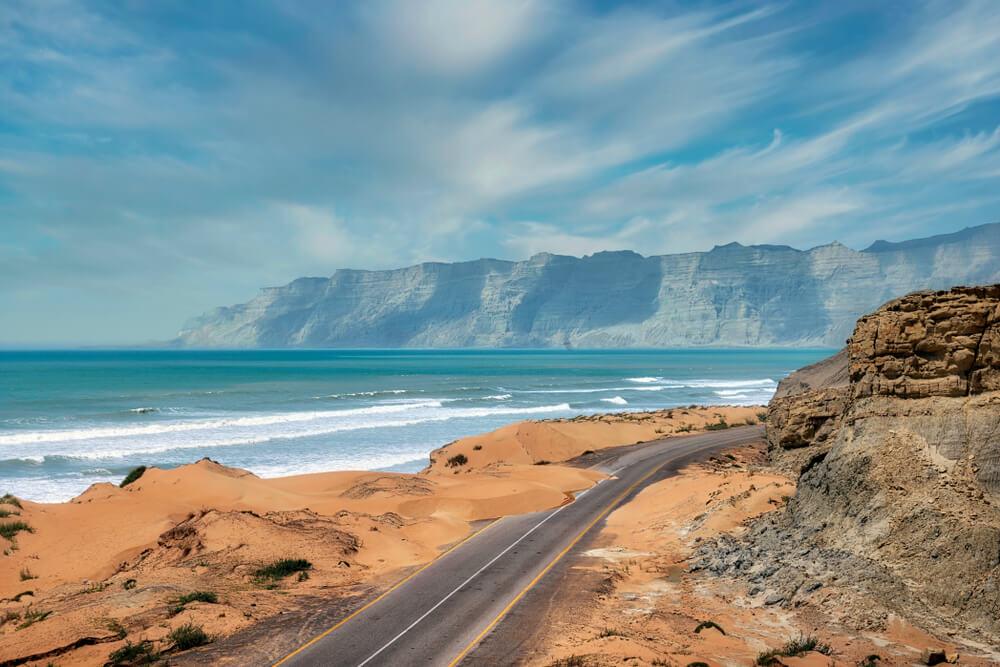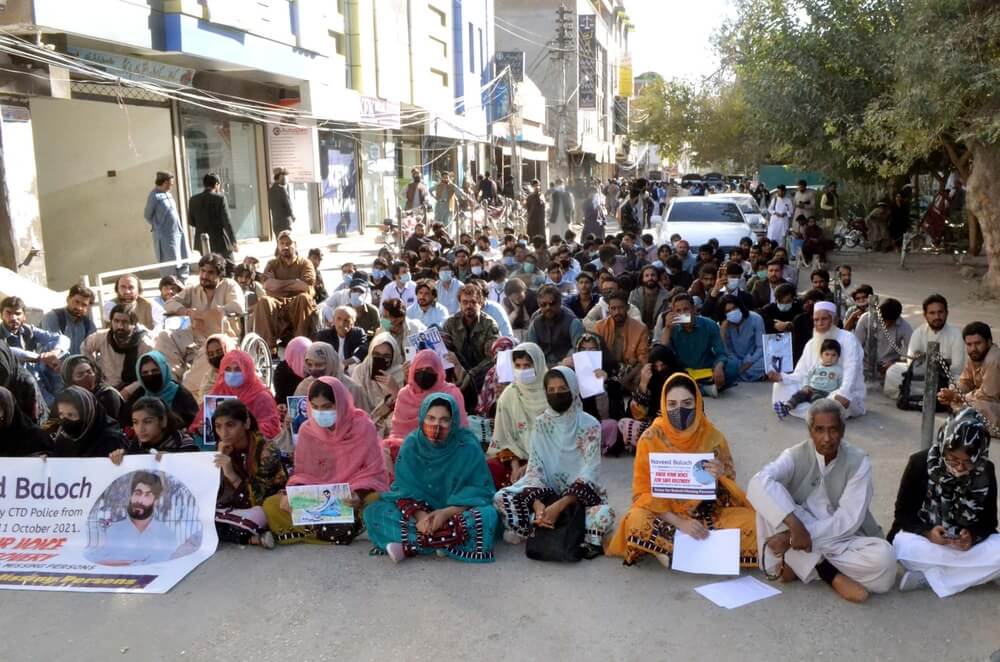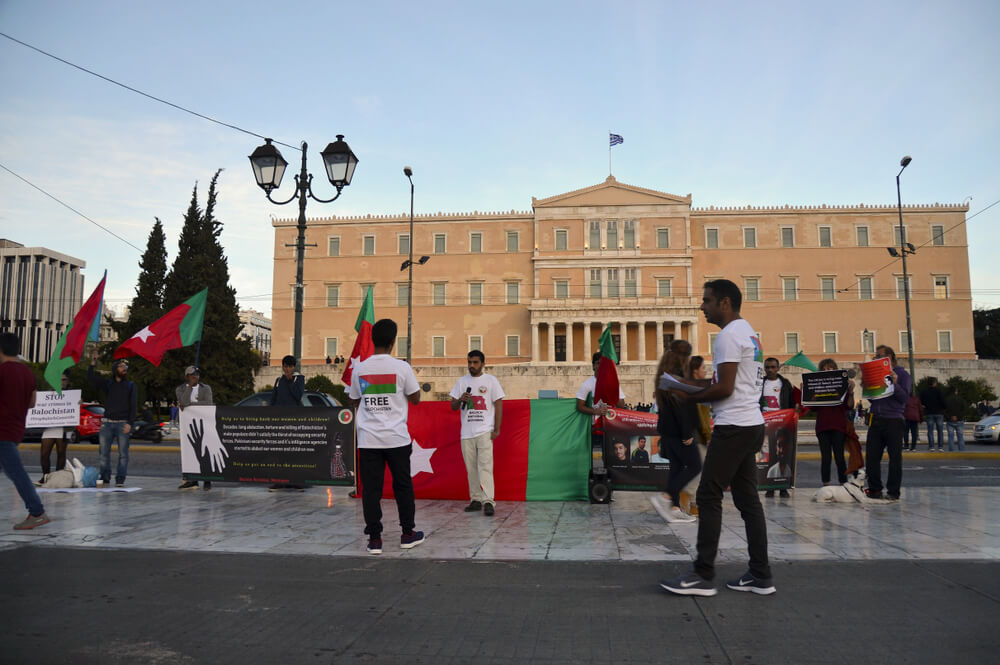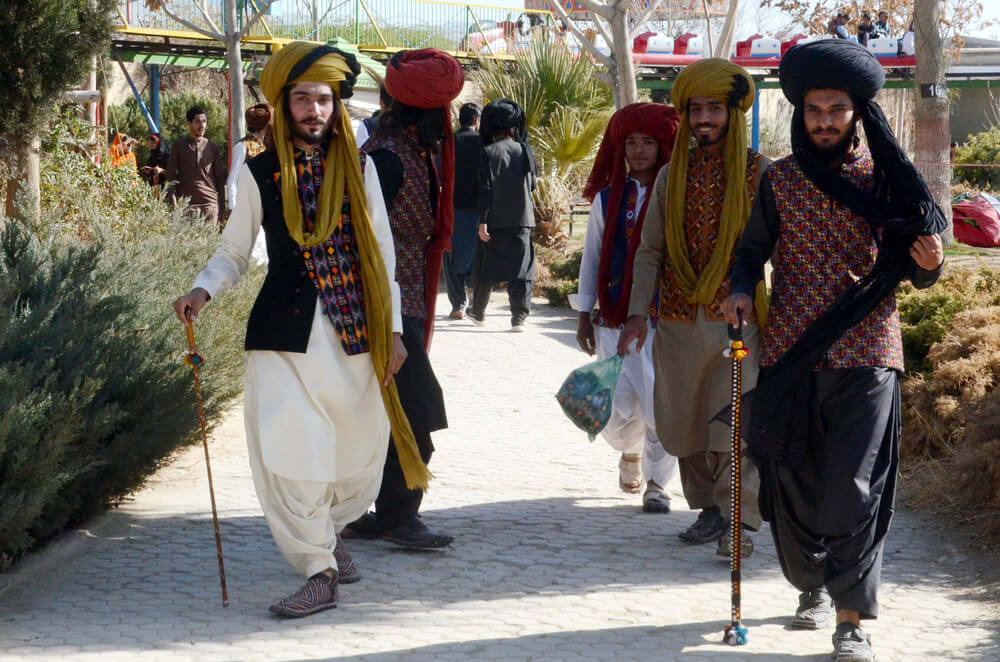Balochi Culture
When you hear the word ” Balochi, ” do you imagine an area with dry, barren lands and mountains? Well, Balochi culture is the total opposite of that. So, if you ever want to experience a rich culture with beautiful traditions and colorful arts or crafts, Balochi culture will be fascinating!
Balochi culture has a rich history and is one of South Asia’s oldest cultures. There’s a common misconception that Balochis only belong to Pakistan; however, they have roots connected to Iran and Afghanistan.
The Baloch people are thought to have originated in present-day Iran and migrated towards the west into Balochistan. However, there are many different theories about their original homeland. Religion is essential in Balochi culture, and most Baloch people are Muslims.
The Baloch people are an ethnic group that lives in the Balochistan region of Pakistan, Iran, and Afghanistan. Many Balochs live in Oman, the United Arab Emirates, and Kuwait.
Balochi literature is rich and diverse, with a long oral storytelling tradition. Balochi poetry is particularly famous, and there are many styles of Balochi embroidery.
Baluchi culture is very traditional and family-oriented. Weddings are elaborate affairs, often lasting several days, and food plays a vital role in Balochi festivals and celebrations. Balochi dance and music are also essential parts of the culture. As a result, the Baloch people have a unique way of life that differs from the rest of Pakistan. Balochis are also famous for their Baloch Culture Day!
Let’s explore more fun facts about the culture of Balochistan in this article!
Origin of Balochi Culture
Baloch people are believed to have originated in Iran and migrated to Pakistan in the early 13th century. By the 13th and 14th centuries, many Baloch people were migrating toward Sindh. By the 15th century, Balochis were settled across Punjab, Sindh, and Baluchistan (their current homeland in Pakistan).
Balochi culture has been influenced by the Middle East, Central Asia, and South Asia cultures. Since the Balochis resided in these areas, Balochi culture was influenced by the customs and traditions of these cultures.
Baloch culture spread from the remote areas of Iran to Baluchistan, Pakistan. Many Balochi people live in Iran, Afghanistan, Oman, and even the United Arab Emirates. But no matter where they live, they always follow the beautiful Balochi culture and customs.

The Balochi culture is rich in traditions and customs. They have unique lifestyles, dress, eat, and celebrate festivals. You can see them in their traditional dresses wherever they go.
The Religion of Balochi Culture
Most of the Balochi people are Muslims, and they follow Sunni Islam. However, there is a small population of Shia Muslims as well. There are also some Hindus and Christians living in Balochistan, but their number is meager compared to Muslims.
Balochis in the United Arab Emirates or Oman are mostly Muslims following Sunni Islam, and a small part also follows Shiaism.
Balochi Tribes
Balochi are Iranian people of the Western Iranian group and the Northwestern subgroup who have their homes in three countries, i.e., Pakistan, Iran, and Afghanistan.
Balochi tends to live in tribes, and these tribes are running through generations from past centuries.

There are many Balochi tribes living in Pakistan and Afghanistan. The most famous tribes are:
Rind
The Rind is a Baloch tribe that, according to folklore, was founded by Rind Khan, one of the sons of Mir Jalal khan.
Bugti
Bugti is another tribe in eastern Balochistan and comprises almost 1,80,000 people.
Lashari
Another tribe founded by one of the Jalal Khan sons, Lashar Khan, is the Balochi tribe, which is found in different parts of Pakistan.
Some other significant tribes of Balochis are Ahmedzai, Buledi, Magsi, Khosa, Umrani, Dashti, Nosherwani, Zahrozai, Notazai, and Kenazai. All these tribes are further subdivided into various branches.
Each tribe has distinct customs, traditions, and codes of conduct passed on from generation to generation.
Balochi Culture Language
The original Balochi language is an Indo-Iranian language of the Indo-European family. However, the modern Balochi language seems to influence Arabi, Persian, Sindhi, and other languages. Before the nineteenth century, there was no written form of the language, so Persian was used for official writing purposes.
Even though the current population of Balochistan is relatively scarce, there’s an uncommon racial and tribal diversity. Most people in towns and cities understand and speak more than two languages. However, Balochs speak and understand Balochi, Pashto, and Brahvi and get along with Urdu, the national language of Pakistan.

For instance, in Kachhi and Sibbi districts, Balochis speak Seraiki and Sindhi but can also speak Urdu. Quetta, the hub of all linguistic groups, accommodates Urdu, Pashto, Brahvi, Balochi, and Sindhi-speaking people, as well as Persian and Darri-speaking ones.
There are also a considerable number of people who have adopted different lifestyles. In some cases, this has been for economic reasons, while others chose to do so due to social pressure. The result is that you will also find many Hindus, Christians, and Sikhs living in Balochistan.
Balochi Literature
Literature plays a vital role in the development of any society. It is a source of knowledge and wisdom and helps people understand their history and culture. Balochi literature is no different.
Many famous Balochi poets and writers have contributed to the development of the Balochi language and literature. But there’s a sad thing about Balochi literature: It needs to be more readers and appreciators.
Balochi literature is rich and based on the Balochi people’s oral traditions. It includes folktales, proverbs, poems, and songs.
In 1951, Khair Mohammad Nadvi, with his literary friends, initiated a platform for improving Balochi literature. He and his companions published a periodical, “Oman,” to spread and enhance Balochi literature. The publications of this periodical started increasing gradually, but with time, they somehow failed to use the latest techniques and methods of implementation.
The services of Syed Zahoor Shah Hashmi must be addressed in giving Balochi literature equal importance as any other literature. He worked all his life to develop a way to bring Balochi on the same page as all other literature. He worked in all areas of literature, including translation, poetry, language, research, and novel writing.
Syed Zahoor Shah wrote the first Balochi novel, “Nazook,” and he also arranged the first Balochi dictionary, Syed Ganj. In short, his contributions to Balochi literature are unforgettable and immense.
Balochi Culture Poetry
The most famous form of Balochi literature is poetry. Many famous Balochi poets have recited their poems in different parts of the world and have received international recognition.
The poetry field is thriving very slowly, but it still has the potential to gain recognition. The only problem with Balochi poetry is that only a few writers want to change it during modernism.
The land of Balochistan has given birth to many famous poets like Gul Khan Naseer, Muran Awani, Yousaf Ali Khan Magsi, Attah Shad, and Syed Zahoor Shah Hashmi. Their poems are not only favorites in Pakistan but also in other countries. So, a primary aspiration in Balochi poetry is to create awareness of political issues among the general public.
Gul Khan Naseer’s poetry and work accurately depict and express Balochi’s political and social approach since the early thirties. He worked for more than 50 years of his life for national independence.
The “Big Three” in modern Balochi literature consists of Syed Zahoor Shah Hashmi, Atta Shad, and Gul Khan Naseer. The former spent all his life seeking knowledge of Balochi literature rather than being socially or politically active.
Balochi poets have written about various topics, including love, nature, patriotism, and social injustice.
Poetry can be seen as the highest form of expression in the Balochi language. Words are not just strung together but have a deep meaning and purpose.
Balochi Folktales
In Pakistani folklore, Balochi folktales aren’t given much limelight but are attention-worthy, magical, and soul-touching.
Balochi folktales are an essential part of the Balochi oral tradition. These stories have been passed down from generation to generation and often teach moral lessons.
Balochi folklore consists of stories about bravery and courage. Many of these stories feature animals as the main characters. The most popular Balochi folktale is the story of Hani and Sheh Mureed; it’s a ballad that highlights different forms of love that arise in Sheh Mureed’s life.
Balochi folktales often teach moral lessons, such as the importance of being kind, helpful, and truthful.
Balochi Dresses
Balochi culture is also evident in the traditional Balochi dress. Like all other provinces of Pakistan, Balochis wear Pakistan’s national dress, the Shalwar Kameez, with noticeable changes. These changes make it evident enough to be recognized as Balochi dressing.
The dressing style of Balochi, Pashtoon, and Brahvi is quite similar, with few changes. In all of the tribes, men wear turbans as headwear. In addition, they wear wide, loose shalwars with a knee-long shirt called a kameez. Women wear a typically embroidered shirt with a big pocket in front; the embroidery consists of small, rounded mirror pieces embedded in the shirt, which makes it beautiful.
A long rectangular piece of clothing cascading down the shoulders and used to cover the head by women is worn, and it’s called Duppataa or Chaddar.
Balochi dressing is simple but elegant. The people of Balochistan are very hospitable, and their culture is rich.
Balochi Food
Balochi usually has only two meals a day, one at dawn, called Nahaar, and the other at dusk, called Chaehar. The food is simple but filling and nutritious.
The most common dish is Sajji, a chicken or mutton dish roasted on skewers over coal. It is served with plain rice and a salad. People usually eat this dish with knives, but Balochis prefer to eat It with their hands. Another popular dish is Dal, a thick lentil soup often eaten with flatbread.
Men and women eat separately, and that’s embedded in their tradition. However, Balochis love to have vegetables, butter, and milk in their meals.
Balochi has an enormous variety to serve for dessert, but they especially love Muddar and Kappo. These dishes’ uniqueness has made them stay on trend even after decades. Muddar is a popular Balochi dessert made of dates and easy to prepare.
Balochi food is not only about the traditional Sajji; it’s an array of delectable cuisines that reflect Balochistan’s culture, history, and values.
Balochi Festivals
Balochi people are keen and enthusiastic about celebrating religious and social festivals. They observe religious celebrations nationwide, like Eid Ul Azha and Eid Ul Fitr.
On these festive occasions, people tend to decorate their houses, wear new bright-colored dresses, and cook unique dishes. These religious festivals and Baloch culture are full of many social festive events, which are a sight to behold when celebrated.
Sibi festival is celebrated with folk music performances, cultural dances, handicrafts stalls, and other entertaining activities. There are also cattle shows that depict Balochistan’s bright side. This festival has roots connected to Mehergar, an ancient human civilization archaeological site. The fest attracts people from across the country.
The common public and government officials and ministers attend these festivals.
Another festival, Buzkashi, is celebrated in which a dead goat is placed in a field, and players on horseback try to snatch it and take it to the goalpost. The festival shows the courage and bravery of the Baloch people. Turkic people first played this game.
These festivals are celebrated with great enthusiasm and joy by the people of Balochistan.
Baloch Culture Day
Baloch Culture Day is celebrated on March 2 every year to preserve the cultural heritage of the Baloch people. The day starts with the hoisting of Balochistan’s flag, followed by a parade by the students.
Balochi people organize rallies and gatherings to celebrate this day with full zeal.
Different stalls are also set up, showcasing traditional food, clothes, handicrafts, and other items of the Baloch culture. Folk dances and music are also performed on this day.
According to archeology reports, the Baloch culture is said to be one of the oldest and strongest cultures in the world. In addition, Baloch is fortunate enough to have a beautiful culture that depicts Baloch’s distinctiveness compared to other cultures.
Baloch traits like bravery, hospitality, and keeping promises are showcased in their culture through different activities.
Culture Day is a way to preserve and promote Baloch culture so that the new generation knows their roots and is proud of their culture.
Balochi Embroidery
Balochi embroidery is one of the most popular arts and crafts in Balochi culture, and women do it passionately.
The Balochi embroidery is stunning and intricate. It is done on both clothing and household items. The most common designs are geometric shapes, flowers, and paisleys.
The embroidery is usually done in bright colors like red, green, blue, and yellow. However, Balochi women embroider their dresses and stitch them for daily wear. That’s the most beautiful thing about Balochi culture in Pakistan.
Balochi embroidery has become famous worldwide through Pakistani exhibitions in different countries recently.
Balochi Wedding Traditions
Balochi weddings are unique to Pakistan. Unlike in other provinces, Balochi marriages are strictly held according to Islamic principles. The wedding is held in the presence of a Mullah (a religious teacher) and witnesses. All family members attend the wedding with joy and share happiness.
Balochi marriages are held at an early age, but these are fixed even long ago, i.e., at the time of birth. Balochis are very peculiar about their pride, so they don’t support love marriages; you won’t see even a single love marriage in any tribe.
Balochis usually tie knots within the tribe, but sometimes intra-tribal marriages also occur. However, there’s little to no divorce ratio, as Balochis consider it disrespectful.
Balochi weddings are very colorful and full of traditions. The bride and groom usually wear traditional clothes on their wedding day.
Balochi Sports
Balochistan is full of fun games, plays, and activities, which are carried out and performed in various regions, specifically in Makran.
Balochi traditional sports are quite different from those in other parts of Pakistan. Chauk and Ji are among the most popular games.
Some other famous games are Kapagi, Hashti, Nogadgi, Setoki, Matoki, Hadogi, Sache, Sakhan Kuti, and many others.
Balochis are very enthusiastic about games; they are brave and always ready to show their courage and win the game.
Balochi Culture Dance and Music
Balochistan is a land of music and dance. In various regions, many different types of musical instruments are played.
Flutes, Soroz, Setar, Tambura, and Damam are the most popular and well-known musical instruments. These instruments are primarily used in folk music.
Balochi music has a unique style and sound, which is different from the music of other regions in Pakistan. The famous cultural wedding tracks are Salonk and Nazenk, which feature beautiful melodies and women dancing with friends and family.
The most popular Balochi dance is “Dochaap.” It’s a group dance performed by women who move in a circle and clap their hands. Other famous Balochi dances are Hambo, Latti, and Lewa.
Another popular type of dance is “Gera,” by men. They hold each other’s shoulders and move in circles while singing folk songs.
Frequently Asked Questions of the Balochi Culture
What is the Baloch known for?
The Baloch are known for their traditional music, which has a unique sound that is different from the music of other regions in Pakistan. They are also known for their courage, which has been passed down through the generations.
What kind of Baloch people live?
There are different types of Baloch people. Some are nomadic, while others are settled. Some also live in cities and towns.
Balochs are beautiful people with a hospitable nature; if you ever visit a Balochi household, you’ll be amazed by its warm heart.
What is a Balochi dress called?
The traditional dress of the Balochi people is called Balochi Shalwar Kameez, which is quite similar to that of Pashtuns. However, the present-day Balochi shalwar kameez is somewhat modified from the earlier version, which had a robe to the ankles, and the shalwar was made of a cloth of 40 yards.
What is Balochi culture famous for?
Pakistan’s Balochi culture is famous for its music, dance, and embroidery. It is also known for its traditional weddings, which are colorful and festive.
Where do Balochi people originate from?
The Balochi people are thought to have originated from Iran and its surrounding areas and then migrated to Balochistan, Pakistan, and Afghanistan. Currently, Balochs also live in Oman and the United Arab Emirates.
The Balochi culture is rich and unique and has a lot to offer. It is known for its music, dance, and embroidery. It is also known for its traditional weddings, which are colorful and festive.
Balochi culture is vibrant and has unique traditions. The people are warm and welcoming. If you ever have a chance to visit Balochistan, experience the culture yourself!


